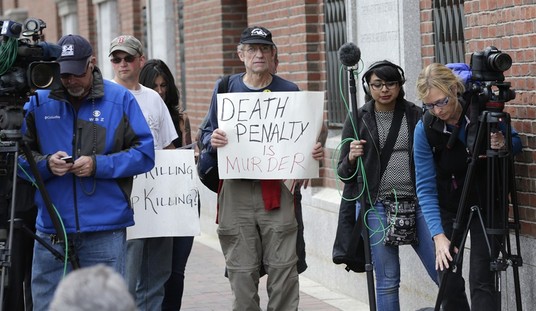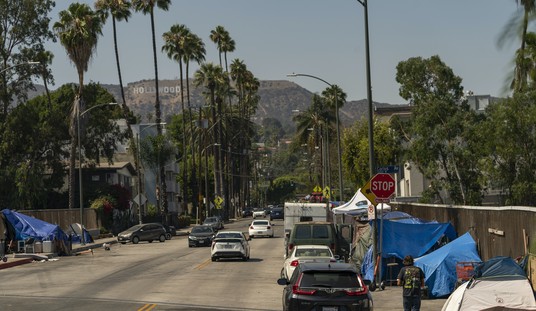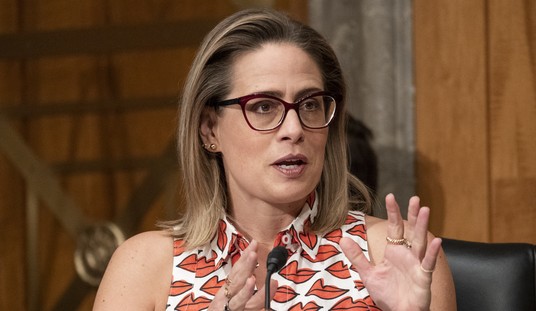On Tuesday, the Los Angeles police commission ruled that two LAPD officers had violated department policy in an officer-involved shooting that occurred last June. The ruling itself comes as no surprise, as the shooting resulted in the death not only of the suspect but also, sadly, of a hostage.
On June 16, officers from the LAPD’s Van Nuys Division, in the San Fernando Valley, were dispatched to a report of a stabbing. The caller said the suspect was still at the scene and was armed with a knife. An LAPD helicopter came over the scene first, and an officer in the helicopter described what he saw to responding ground units. (The incident was captured on the officers’ body-worn and dashboard cameras, and by a security camera at the church where it occurred. The footage can be seen here. The 911 call and some of the relevant radio traffic can also be heard at the link.)
The first arriving officers pulled into the driveway of the church, where they saw the suspect, Guillermo Perez, and several other people. Perez was holding a long knife and a folding chair, and as the officers shouted at him to drop the knife, he refused to comply and walked slowly toward them. Elizabeth Tollison, 49, was standing nearby. When Perez continued toward the officers while holding the knife, two of them fired at him with beanbag shotguns, the projectiles from which are designed to stun suspects but not cause serious harm.
The beanbag rounds were ineffective, and Perez then retreated to where Tollison was standing, grabbed her from behind, and put the knife to her throat. Three officers fired 18 rounds at him with their handguns, killing him. Two of the rounds struck Tollison, and she died as well. The five police commissioners ruled unanimously that two of the officers had violated policy. One presumes the third officer who fired was found to have hit Perez and not Tollison.
On its face, there is little in the ruling to quarrel with. Officers are expected to be sure of their target before firing, and though we are not told how many rounds each officer fired, the total of 18 seems excessive under the circumstances. I realize it’s easy for me to say this from the comfort of my office, but the proper response, once Perez had Tollison in his grasp, would have been for at least one officer to advance quickly on him and take a well-aimed head shot, as LAPD Chief Michel Moore explained.
But, as Chief Moore did not explain, just as the police commission did not explain, the incident should not have ended as it did because Perez should not have been allowed to grab Tollison in the first place. Rather, he should have been shot as soon as he made a move toward her, as I suspect he would have been not long ago.
Why wasn’t he? Because LAPD officers have grown wearily accustomed to seeing their colleagues criticized by the commission and department brass for failing to “de-escalate” incidents before resorting to deadly force. De-escalation is all the fashion in police work today, and the L.A. police commission is inordinately devoted to it. Make no mistake, de-escalation is fine up to a point, but that point was crossed the very instant Guillermo Perez refused to follow lawful commands and moved toward a potential hostage. Surely it entered the officers’ minds that he should be shot at that moment, but just as surely they hesitated for fear of being castigated for acting too precipitously. Instead, they were placed in a position where they were forced to choose between taking imprecise shots and watching Perez cut Tollison’s throat, as he was doing when he was hit by gunfire.
I have written often (here, for example) of the Los Angeles police commission and their misguided opinions on how police work should be conducted. Its five members are appointed by the mayor, who selects them not on the basis of any actual expertise in law enforcement but rather for each member’s ability to check a box on the approved diversity matrix. It’s clear from some of their past rulings that they have scant understanding of how events unfold in the real world.
It is the real world that police officers must confront, and it does not in every case conform with the utopian visions conjured up by the L.A. police commission. It seems obvious that their emphasis on de-escalation caused these officers to hesitate when deadly force was called for and could have been used with minimal risk to the woman who moments later became a hostage. They will never admit it, but the commissioners share in the responsibility for Elizabeth Tollison’s death.










Join the conversation as a VIP Member